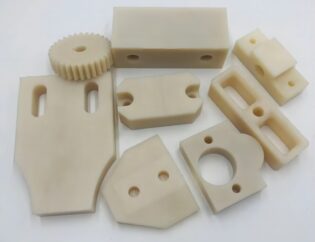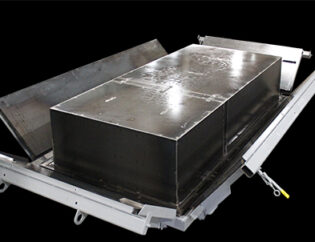Machining marble is a fascinating blend of art and engineering, transforming raw stone into stunning works of craftsmanship. This guide delves into the intricacies of marble machining, highlighting its significance in architecture, sculpture, and interior design. Understanding the techniques and tools involved is essential for anyone looking to master this timeless material.
Readers can expect to learn about the various machining processes, from cutting and shaping to polishing and finishing. We will explore the tools required, safety precautions, and best practices to achieve precision and quality in every project. Whether you are a seasoned professional or a curious beginner, this guide will equip you with the knowledge to work effectively with marble.
Additionally, we will discuss the unique properties of marble that influence machining techniques and outcomes. By the end of this guide, you will have a comprehensive understanding of how to manipulate this beautiful stone, allowing you to create breathtaking pieces that stand the test of time.
How to Cut Marble: A Comprehensive Guide
Marble is a timeless material, often used for countertops, flooring, and decorative elements in homes. Its elegance and durability make it a popular choice, but cutting marble can seem daunting. Fortunately, with the right tools and techniques, you can achieve clean, precise cuts. This guide will walk you through the process of cutting marble, including the tools required, safety precautions, and step-by-step instructions.
Understanding Marble Cutting
Cutting marble involves more than just using a saw. It requires knowledge of the material, the right tools, and safety measures. Marble is a natural stone that can chip or crack if not handled properly. Therefore, understanding the types of saws and blades available is crucial.
Technical Features of Marble Cutting Tools
| Feature | Wet Saw | Circular Saw | Angle Grinder | Dremel | Tile Cutter |
|---|---|---|---|---|---|
| Blade Type | Diamond blade | Diamond blade | Diamond blade | Diamond bit | Scoring wheel |
| Water Cooling | Yes | Optional | No | No | No |
| Cutting Thickness | Thick slabs | Medium thickness | Thin pieces | Thin tiles | Thin tiles |
| Precision | High | Moderate | Moderate | High | High |
| Ease of Use | Requires setup | Portable, easy to use | Handheld, versatile | Handheld, precise | Simple, manual operation |
Types of Marble Cutting Tools
| Tool Type | Best For | Advantages | Disadvantages |
|---|---|---|---|
| Wet Saw | Thick slabs | Clean cuts, reduces dust | Requires water source |
| Circular Saw | Medium thickness | Versatile, portable | Can create dust |
| Angle Grinder | Small, detailed cuts | Handheld, versatile | Risk of chipping |
| Dremel | Intricate designs | Precise, easy to handle | Limited to thin materials |
| Tile Cutter | Thin tiles | Simple to use | Limited to tile thickness |
Tools Required for Cutting Marble
To cut marble effectively, you will need the following tools:
– Wet Saw: Ideal for thick slabs, providing clean cuts with minimal dust.
– Circular Saw: Versatile for various thicknesses, but requires a diamond blade.
– Angle Grinder: Useful for small, detailed cuts.
– Dremel: Best for intricate designs and thin tiles.
– Tile Cutter: Simple tool for cutting tiles.
Safety Precautions
Before starting, ensure you have the necessary safety gear:
– Safety Glasses: Protect your eyes from flying debris.
– Gloves: Use durable gloves to protect your hands.
– Ear Protection: Wear earmuffs or earplugs to guard against loud noise.
– Dust Mask: Prevent inhalation of dust particles.
Step-by-Step Guide to Cutting Marble
Step 1: Measure and Mark
Begin by measuring the area you want to cut. Use a pencil or tape to mark the cutting line clearly. If the marble is dark, consider using masking tape for better visibility.
Step 2: Prepare Your Workspace
Set up your workspace in a well-ventilated area. If using a wet saw, ensure you have access to a water source. Place the marble on a sturdy surface, such as a workbench or sawhorses, and secure it with clamps.
Step 3: Choose the Right Tool
Select the appropriate tool based on the thickness of the marble and the type of cut you need. For thick slabs, a wet saw is recommended. For smaller pieces, a circular saw or angle grinder may suffice.
Step 4: Cutting the Marble
- Wet Saw: Turn on the saw and let the water flow. Slowly guide the marble into the blade, following your marked line.
- Circular Saw: If using a circular saw, ensure the blade is wet to prevent overheating. Cut slowly and steadily along the marked line.
- Angle Grinder: For small cuts, hold the grinder firmly and move it along the marked line, applying light pressure.
- Dremel: Use the Dremel for intricate designs, moving slowly to maintain control.
- Tile Cutter: Score the tile along the marked line and snap it to complete the cut.
Step 5: Finishing Touches
After cutting, inspect the edges. Use sandpaper to smooth any rough edges, ensuring a clean finish. Wipe away any dust or debris from the surface.
Conclusion
Cutting marble can be a rewarding DIY project when approached with the right tools and techniques. Whether you’re installing a new countertop or creating decorative elements, understanding the cutting process is essential. With practice and patience, you can achieve professional-looking results.
FAQs
1. What is the best tool for cutting marble?
The best tool depends on the thickness of the marble. A wet saw is ideal for thick slabs, while a circular saw or angle grinder works well for thinner pieces.
2. Can I cut marble without water?
While it is possible to cut marble without water, using water helps reduce dust and keeps the blade cool, preventing damage to both the blade and the marble.
3. How do I prevent chipping when cutting marble?
To prevent chipping, ensure the marble is securely clamped, use a diamond blade, and cut slowly to avoid excessive pressure.
4. Is it safe to cut marble at home?
Yes, cutting marble at home is safe as long as you follow proper safety precautions, including wearing protective gear and using the right tools.
5. Can I use a regular saw to cut marble?
Regular saws are not recommended for cutting marble. A wet saw or a circular saw with a diamond blade is necessary for clean cuts.









